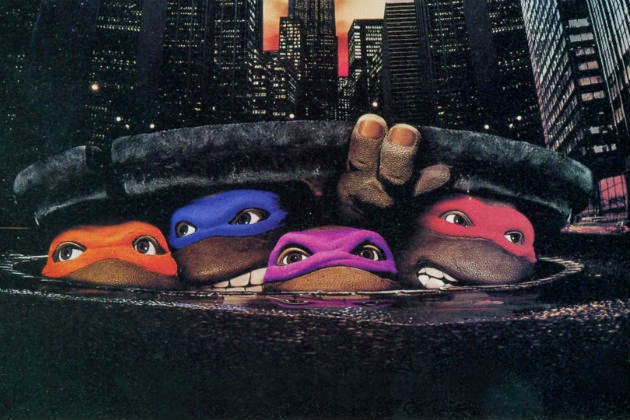In the modern era, movies are light on decent college football opuses. (“College Coach” of 1933 and the Golden Age is my personal favorite.) Oh, some will point you toward “Rudy” and I will then point you toward Charles Pierce unforgettably calling it “a passel of unreconstructed mythopoeic bullpucky even by the standards of the university in question, which are considerable.” And when I Googled “College Football Movies”, like any strong-minded cinematic scholar of a certain genre might, I immediately came upon a Top 10 list at Bleacher Report (not linking cuz, like, really) which in keeping with its reputation as a bastion of well-researched, seriously-considered, liltingly-written prose kicked off its list with the following: “The Waterboy is definitely one of Adam Sandler's worst movies, but this movie still has its moments. And it is about college football.” Oh. Well. Sure. I mean, as long as it has its moments. (This list was composed by a “senior analyst.” God help us all.)
This, people, is what I’m talking about. I couldn’t even read the rest of the list. If it needs to include “The Waterboy”, even if it’s all the way down there at #10, we as a movie-producing, college football-obsessing nation have precipitously failed. And to me, this is unacceptable, and which is why I am here today in my official capacity as irrational college football devotee and movie loving whack job to propose five college football-centric films that should be made immediately.
5 College Football Movies That Need To Be Made
Disciples of St. Darrell. In 1963, Dan Jenkins of Sports Illustrated, whose phenomenal writing on the greatest sport continues to endure, traveled with a quartet of high-livin’ Texans as they attended four football games – three college, including the vaunted Red River Rivalry (Texas vs. Oklahoma), and one professional – over the course of 72 hours, eating, drinking, bulls****ing, and being oh so Texas-y. Describing it would take as long as it takes to actually read the article. So just read the article, and then be prepared to ask aloud, “Why isn’t that a movie?”
Plainfield Teacher’s College. Amongst the greatest sports hoaxes, I first came across this in one of those Incredibly True Sports Stories, or some such, books in my grade school library, though it was also recounted on an episode of Slate’s Hang Up and Listen sports podcast. In 1941, a Wall Street Stockbroker with the laudatory name of Morris Newburger invented a mythical football team known as Plainfield Teacher’s College. These were throwback days when newspapers printed scores of games called into them, so Newburger simply phoned in non-existent scores of non-existent games under an alias and presto! A make-believe juggernaut was conjured. I’m picturing a Charlie Kaufman-ish vibe, a film swinging riotously between reality and fantasy, the fictitious accounts mutating into something tangible, real life people becoming consumed by the fanciful ones, a crazified account of how the game is rooted in sentimentalized fantasy as much as reality. (One important note: Newburger also manufactured a star player named John Chung who – oh boy – gained power by eating rice on the sideline between quarters. Ah, America. We might have to eliminate that tidbit for the filmed version.)
1942 Rose Bowl. One of the go-to trivia questions for any CFB nut is this: what was the one Rose Bowl not contested in Pasadena, California? Answer: 1942, which was moved from the west coast in the immediate aftermath of Pearl Harbor all the way across the country to Durham, North Carolina and Duke University where it was played in the rain. Last year Sports Illustrated had a fabulous recounting of the entire ordeal, the cross-country journey Oregon State would make and their Japanese-American teammate forced to stay behind, and opposing players that would later meet on the battlefield. There is a whole movie, I think, in chronicling this entire story, one that both gave a concerned nation something to focus on and simultaneously proved how much sports can mean and how little sports can mean in the grand scheme.
The Toilet Bowl. In 1983 Oregon and Oregon State played the last collegiate football game to conclude in a 0-0 tie (overtime has been added to prevent such a result, but it took 14 years) in the ancient sport’s most singular debacle, a game so infamously god-awful that colloquially it has come to be known as the Toilet Bowl. The glory of its misery is truly mind-boggling. The teams combined for eleven fumbles, five interceptions and four missed field goals and was contested in, as sportswriter Austin Murphy wondrously phrased it, “Old Testament rains.” This, along with another idea I have long pondered, is my dreamiest of dream movies, one that in its ballad of comical ineptness would still impress upon us the game’s absurd romanticism and how even in the worst of times and the foulest of conditions, the glory of sport and the human desire to succeed can shine through gray, gloomy clouds above soggy 1980’s Oregon astroturf.
The Vol Navy. The one original pitch on this list. The Vol Navy is a fleet of high-falutin’ Tennessee Volunteers fans in expensive yachts who tailgate on the Tennessee River, flowing alongside the banks where mammoth Neyland Stadium rests. And while offering this idea might give someone a bad idea, well, what about a comical thriller in which a crazed Alabama fan goes rogue on the Third Saturday In October, masquerades as a Tennessee fan, acquires a luxurious boat, infiltrates the Vol Navy, and attempts to……well, you see where this is going. Also, if you know SEC football, you know this idea isn’t as absurd as it sounds. Even if it was all made up it might be more fact based than “The Express.”










































